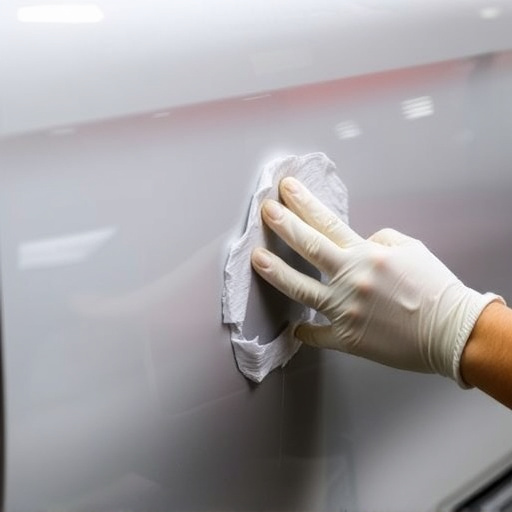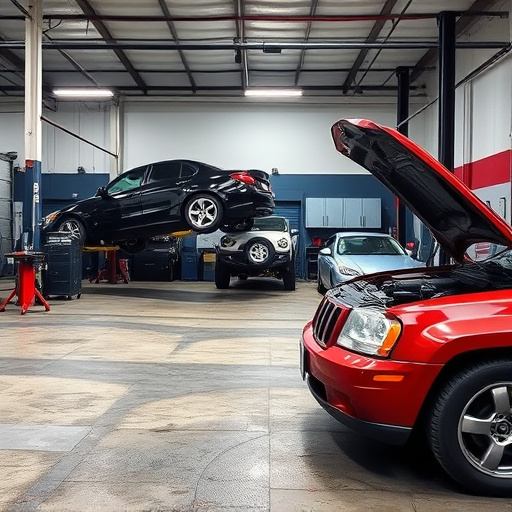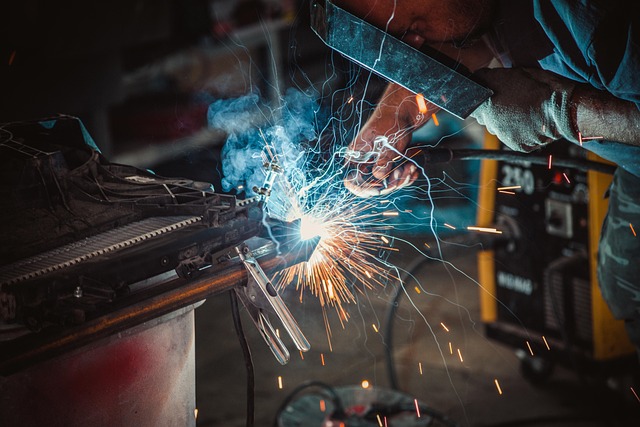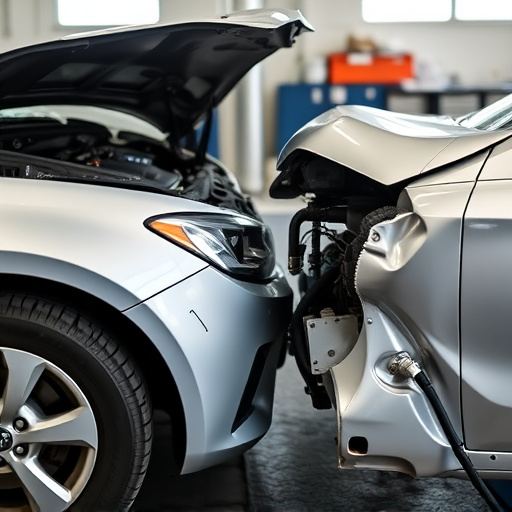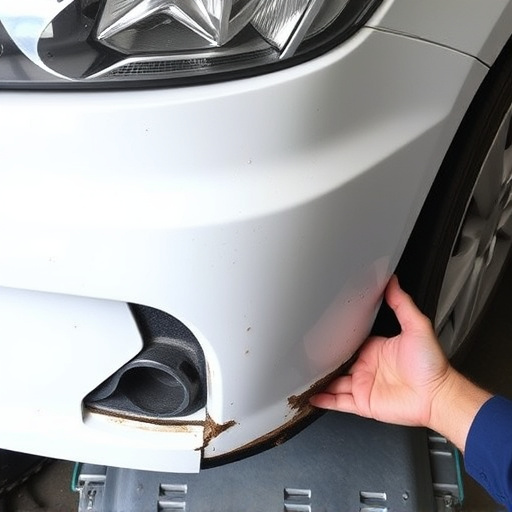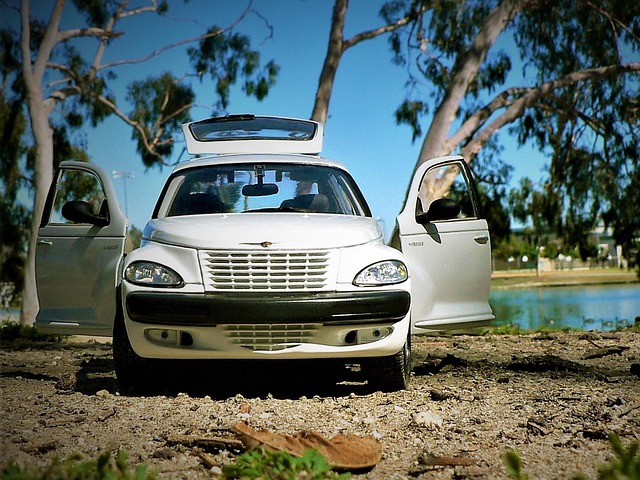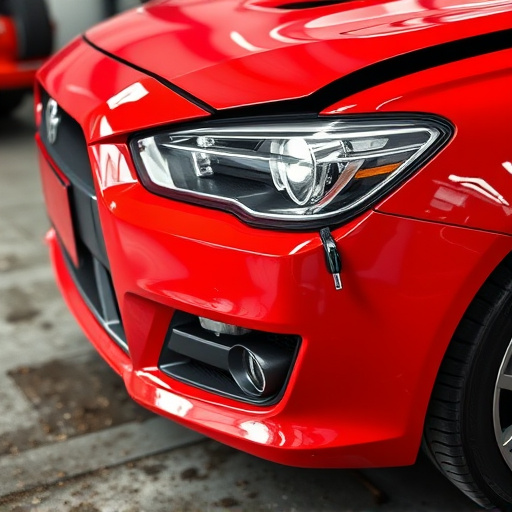Water-based auto paint offers environmental and practical advantages, reducing air pollution, providing quick drying times, excellent coverage, and safer working conditions. Its eco-friendly nature, precision color matching, low odor, and non-toxic properties make it a preferred choice for auto body shops. Adopting this technology drives sustainability, cost savings, and improved efficiency in auto painting processes while ensuring robust quality control measures for superior finishes.
In today’s eco-conscious automotive landscape, adopting sustainable practices is no longer an option but a necessity. One pivotal aspect is transitioning to eco-compliant auto paint programs. This article explores the key elements of such initiatives, focusing on water-based auto paint as a primary solution. We delve into its benefits and unique properties, discuss implementing green painting processes and techniques, and emphasize quality control measures for successful, environmentally friendly auto paint programs.
- Choosing Water-Based Auto Paint: Benefits and Properties
- Implementing Eco-Friendly Painting Processes and Techniques
- Ensuring Quality Control in Green Auto Paint Programs
Choosing Water-Based Auto Paint: Benefits and Properties

Choosing water-based auto paint is a strategic move for eco-conscious car owners and auto body shops. This type of paint offers a range of benefits, making it an attractive option in the market. Its primary advantage lies in its environmental friendliness; water-based paints contain minimal volatile organic compounds (VOCs), which significantly reduces their impact on air pollution compared to traditional solvent-based formulas. This shift towards more sustainable practices is not just beneficial for the planet but also ensures safer working conditions for professionals in the autobody repairs sector, as they are exposed to fewer harmful chemicals.
Moreover, water-based auto paint provides excellent coverage and a smooth finish, rivaling that of its oil-based counterparts. Its quick drying time and easy application make it a favorite among auto repair near me shops, streamlining the car dent repair process. The versatility of this paint allows for easy matching to various colors, ensuring a seamless and professional look. With its low odor and non-toxic properties, water-based paint is also safer for drivers and passengers, making it a popular choice for those concerned about indoor air quality.
Implementing Eco-Friendly Painting Processes and Techniques

Implementing eco-friendly painting processes and techniques is a significant step towards creating sustainable auto paint programs. One of the most notable changes in this regard has been the rise of water-based auto paint, which reduces the environmental impact compared to traditional solvent-based paints. This shift not only minimizes harmful emissions but also offers better coverage and faster drying times. By adopting these water-based solutions, automotive manufacturers and collision damage repair shops can significantly reduce their carbon footprint without compromising on quality or performance.
Additionally, focusing on efficient application methods, such as spraying techniques optimized for minimal material wastage, further contributes to eco-compliance. Incorporating innovative tools like precision air guns and robotic systems ensures that paint is applied only where needed, reducing the amount of excess material—a common issue in vehicle dent repair processes. These practices not only benefit the environment but also lead to cost savings and improved efficiency in collision damage repair, making them a win-win for both businesses and the planet.
Ensuring Quality Control in Green Auto Paint Programs

In eco-compliant auto paint programs, quality control is not just a best practice—it’s essential to maintaining environmental and safety standards. The shift towards water-based auto paint has significantly reduced the use of volatile organic compounds (VOCs), making car painting processes safer for workers and less harmful to the environment. However, this transition also brings new challenges in ensuring consistent color accuracy and durability. Rigorous quality control measures, including regular testing and calibration of equipment, are crucial in green auto paint programs. These measures help maintain high-quality finishes while adhering to strict environmental regulations.
Proper training for painting technicians is another vital aspect. They must be adept at using water-based paints, understanding their unique properties, and applying them correctly to avoid issues like chipping or uneven coats. Regular inspections of the painting area and materials storage ensure that safety protocols are followed, minimizing exposure to hazardous substances. Thus, integrating robust quality control mechanisms into eco-compliant practices not only guarantees the excellence of car paint services but also reinforces the environmental benefits associated with water-based auto paint and car bodywork services.
In adopting eco-compliant auto paint programs, the industry can significantly reduce its environmental impact. By choosing water-based auto paint, implementing sustainable painting processes, and maintaining rigorous quality control, manufacturers can create products that are not only environmentally friendly but also of high quality. This shift towards green practices ensures a more sustainable future for both the automotive sector and our planet.
